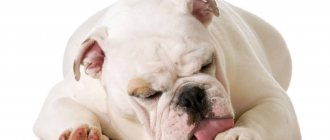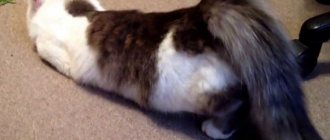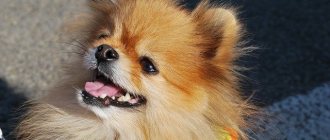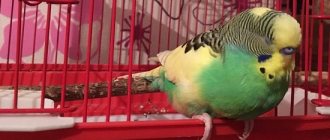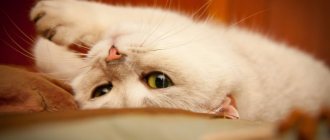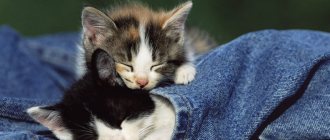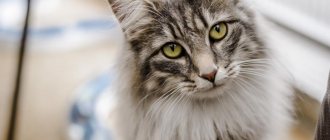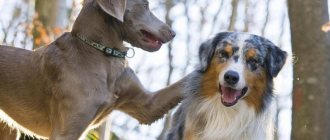Danil Ignatievich Safronov
veterinarian Petstory
When a cat snores or wheezes, owners are often puzzled by the question – is this a problem? Snoring is mostly normal, but in some cases it can indicate health problems. There are a number of pathologies that explain the occurrence of snoring, as well as why a cat sniffles through its nose when it sleeps. The list is quite extensive, so it can be difficult to get to the bottom of the true cause on your own, without a veterinarian.
What causes snoring in cats?
Snoring is the sound produced by vibration of the soft tissues of the upper respiratory tract during sleep. This may be due to the presence of some kind of obstruction to the passage of air into the lungs.
First of all, cat snoring, as a normal phenomenon, may be associated with the physiological characteristics of a particular animal. During deep sleep, the entire body relaxes, including the muscles of the throat and respiratory organs. This causes a narrowing of the airways, which contributes to the vibration of soft tissues due to the incoming air during the next breath.
Sometimes a cat makes sounds when it sleeps if its body is in an unusual, strange sleeping position. Certain positions of the head and body may result in a situation where air flow is restricted, leading to snoring. After changing body position, cat snoring usually stops.
Additionally, there are brachycephalic cat breeds that tend to snore, snore, or snort more due to the structure of their face. Strange sounds may accompany their breathing even while they are awake. This is due to shortening of the facial bones of the skull and nose, shrinkage of the nostrils and narrowing of the nasal passages. The combination of these factors, coupled with an elongated soft palate and adjacent tissue, is more likely to block the airway. If a brachycephalic kitten sniffles through his nose in his sleep, this is normal, because the matter is in the peculiarities of his anatomy. But, of course, if there are no other symptoms.
Brachycephalic breeds include: American Burmese, Persian, Exotic Shorthair, Himalayan, American Shorthair, Devon Rex, Singapura, British, Scottish.
Pet care
Drug therapy is an important consideration when treating your pet for snoring. But a caring owner also needs to provide competent care for the pet during illness.
- First of all, you need to create comfortable conditions for him. Arrange a soft bed and place it in a secluded place where the pet could restore its strength without being distracted by extraneous factors.
- If an animal refuses to eat, then you should not force it to eat. As soon as his health improves, he will go to the bowl himself.
- If a cat's snoring is accompanied by a cough, it is recommended to give the pet as much water as possible so that phlegm comes out of the lungs more easily and quickly. You can use a special sippy cup for this purpose.
- You should monitor the cat’s well-being during treatment, and if no positive results are found, you will need to contact your veterinarian again to select the most effective treatment.
With suitable therapeutic therapy and proper care, the cat will very soon cheer up and again delight its owner in a good mood.
What kind of snoring happens?
When a cat snores or snores loudly during sleep, the nature of the sounds produced may vary. It all depends on the specific animal, the nature of the problem and the location of the pathology, if, of course, it exists.
There are two main types of abnormal sounds associated with obstructive airway diseases: stertor and stridor. They occur either on inhalation or exhalation, depending on the location and severity of the obstruction.
- Stertor occurs as a result of vibration of soft tissues or the presence of secretions in the upper respiratory tract. When they vibrate, they create a classic low-frequency noise. This is the sound that is called snoring. Most often it occurs due to obstruction of the airways inside the nose or throat.
- Stridor occurs when hard tissue vibrates. The result is the formation of a sharp, high-frequency sound. It may occur due to nasal obstruction. Stridor is most often associated with narrowing of the larynx (eg, due to laryngeal paralysis or tracheal collapse).
Sometimes both types of pathological noises can be accompanied by additional characteristics: the sounds can be dry and wet, crackling, hoarse.
How to help your pet depending on the cause of sniffling and grunting?
After identifying the cause of these symptoms and making an accurate diagnosis, the veterinarian will develop a treatment plan. It requires an integrated approach. Therapy is aimed at improving the animal’s condition and relieving signs of the underlying disease. If a four-legged patient has a cough, antitussive drugs (Sinekod, Bronholitin) are used to eliminate it.
For dry cough, expectorant medications (ammonium chloride, Salbutamol) are indicated. When nasal congestion occurs, the nasal passages are washed with saline solution. To relieve inflammation, they resort to rinsing with chamomile decoction. When the listed remedies are powerless, it is recommended to instill any children's drops (Nazivin, Otrivin, Vibrocil).
The main treatment depends on the diagnosis:
- For helminthic infestations, a course of antihelminthic drugs (Milbemax, Stronghold) is indicated.
- When an allergy is diagnosed, its symptoms are relieved with antiallergic drugs (Suprastin, Tavegil). It is important to identify and eliminate the source of the allergic reaction, otherwise treatment will be useless, and attacks of this disease will appear again and again.
- For infectious diseases, antibiotics or antiviral agents are prescribed.
- Symptoms of heart failure are eliminated with the help of glycosides and potassium-containing medications.
- For injuries of the chest, spine, and ribs, immobilization, antibiotic therapy, and painkillers are indicated.
- For obesity, a diet is prescribed.
- Inflammatory diseases are treated with anti-inflammatory drugs and broad-spectrum antibiotics (Streptomycin, Erythromycin).
- When diagnosing asthma, glucocorticosteroids and bronchodilators are indicated.
Why a cat may snore or wheeze in its sleep - 10 reasons
Physiological features
Occurs in brachycephalic breeds (breeds with shortened nasal passages and an elongated palate), as well as in all breeds during relaxation and unusual body position during sleep (this was written above).
Hurry up, choose a box and find out what gift awaits you
Discount on pet insurance
Promo code copied to clipboard
Elderly age
The muscles around the nose, pharynx and larynx lose tone with age, causing vibrations in these areas to become more intense.
Excess weight
In obese animals, the tissues surrounding the upper respiratory tract exert additional pressure, blocking the passage of air.
Upper respiratory tract infections
They are caused by fungal, viral, bacterial agents and are accompanied by inflammation, swelling of tissues, and accumulation of mucous secretions that interfere with normal breathing and lead to narrowing of the nasal passages.
Foreign objects in the respiratory tract
Animals' natural way of exploring the world through their sense of smell can lead to foreign objects entering the nasal cavity. Pieces of debris, food, plant materials (grass blades) or other objects can become lodged in the nose, causing snoring.
Neoplasms, polyps
They can be either benign or malignant and can partially or completely block the passages in the nasal cavity and larynx.
Asthma, allergies
Both conditions cause inflammation and severe swelling of tissue in the airways and can additionally be complicated by infections of a viral or bacterial nature.
Structural abnormalities of the upper respiratory tract
These include: an elongated palate (it closes the entrance to the trachea); stenosis (narrowing) of the nostrils; nasopharyngeal stenosis (narrowing of the common nasal passage); hypoplastic (narrowed) trachea; inverted laryngeal sacs (impede the passage of air). These pathologies are mainly found in brachycephalics, but are sometimes found in breeds with a normal structure of the skull bones.
Periodontal diseases
These pathologies can lead to an oronasal fistula (hole) between the oral and nasal cavities with profuse purulent, bloody discharge, and tissue swelling, which, in turn, contributes to the appearance of snoring or wheezing.
Climatic conditions
Low air humidity leads to excessive dryness of the mucous membrane of the airways and oral cavity, causing snoring.
Preventive actions
To prevent the listed diseases, one of the symptoms of which is sniffling and grunting in a pet, the following safety measures must be observed:
- Carry out vaccinations and deworming in a timely manner. Such measures will help avoid the development of infectious diseases and the appearance of parasites.
- If your pet has an allergy, eliminate its sources in the apartment and avoid the cat’s contact with allergens outside the home.
- Avoid overeating. Do not leave uneaten food in the bowl. If you gain excess weight, it is recommended to switch your pet to a low-calorie diet. Sterilized cats and neutered cats must be fed special food.
- Avoid hypothermia and overheating of the pet and drafts.
- Increase the animal’s immunity through the regular use of vitamin and mineral complexes, agreed with the veterinarian.
- Conduct regular preventive veterinary examinations to promptly identify existing diseases.
- Start eliminating signs of pathologies immediately after they are identified.
Source
When is snoring normal?
In general, snoring is considered normal if it occurs only during sleep without changing the animal's behavior and is not accompanied by other symptoms.
The sudden onset of snoring, wheezing or their progression, as well as cases where the cat snores and wheezes while breathing around the clock, may indicate a problem. It is also abnormal to experience additional symptoms: coughing, sneezing, nasal discharge, shortness of breath and other signs.
The video shows an example of normal snoring
Danger
There are signs that indicate an urgent trip to the doctor. The most dangerous of them is when the animal suffocates while sleeping or awake . Mucus or other fluid from a cat's nose or swelling on the face are symptoms that require immediate consultation with a specialist.
IMPORTANT! Also, you should pay attention to your pet’s hoarse or excessively high-pitched voice.
If a cat cranes her neck as if something is preventing her from breathing, there may be a foreign object in her nasopharynx or throat. Urgent surgical intervention is necessary before the foreign body has yet caused significant harm to the animal.
In what cases should you contact a veterinarian?
An emergency visit to a veterinarian is required by the appearance of symptoms such as shortness of breath, breathing with an open mouth, temporary cessation of breathing (usually during sleep), poor appetite, apathy, and fatigue.
If your cat begins to snore more often or louder than usual and/or other symptoms (coughing, sneezing, discharge from the nose and eyes) appear, this may indicate a worsening condition that requires consultation with a specialist.
Diagnosis of the main causes of snoring will include the following: chest x-ray; clinical and biochemical blood tests; tests for respiratory infections. In some situations (foreign objects, neoplasms, polyps), additional diagnostics are required: endoscopy; computed tomography or magnetic resonance imaging of the head, cytological and histological examination of neoplasms.
Treatment is primarily aimed at eliminating the underlying cause and is prescribed after a clinical examination and diagnostic procedures. In most cases, it is done on an outpatient basis with the use of medications.
If allergies or asthma are suspected, corticosteroids and antihistamines are prescribed. In the presence of respiratory infections, antibacterial and antiviral drugs are used. In situations with neoplasms, polyps, structural abnormalities of the upper respiratory tract, as well as foreign objects, surgical intervention is necessary. In emergency situations, sedation of the animal and additional oxygen support are required in a veterinary clinic hospital setting.
If your cat is overweight, you should consult a veterinary nutritionist to select the right diet and develop a weight loss program.
When the humidity in the cat’s habitat is low, it is recommended to use a humidifier, which will prevent the mucous membranes of the respiratory tract from drying out. You also need to create a comfortable sleeping place so that the cat can sleep comfortably.
Comprehensive diagnostics
Cat owners should remember that any pathology has several manifestations at once, which make it possible to more accurately determine the disease. If you don't notice any changes in your pet other than snoring, there is most likely no cause for concern. Of course, an extra trip to the vet is never harmful.
If you have any doubts about your cat's health, take it to the veterinarian, describing in detail your pet's snoring.
However, cats whose snoring is accompanied by other negative symptoms that are not immediately noticeable and sometimes almost completely unnoticeable deserve special attention. Less obvious manifestations of a possible disease include:
- General weakness, apathy;
- Lack of appetite;
- Temperature increase;
- Digestive disorders: diarrhea, diarrhea, constipation;
- Shortness of breath during free time from sleep, difficulty breathing;
- Frequent sneezing;
- Cough.
When diagnosing the disease, you should pay attention to the painful manifestations that accompany snoring.
Taking an anamnesis
If you have checked one or more items from the above list, you should collect a preliminary medical history to prepare for the veterinarian’s upcoming questions. The anamnesis includes the following information:
- Age and basic habits;
- Accurate weight;
- The time of occurrence of snoring and the possible reasons with which the owner associates it;
- The specificity of the extraneous sounds causing concern - whether they are heard during inhalation, exhalation, or both;
- Paleness or, conversely, inflammation of the mucous membranes during sleep or immediately after waking up;
- The presence of traumatic brain injuries or injuries that affected the muzzle or some parts of it;
- The manifestation of indirect symptoms indicating the painful condition of the pet, indicated above.
A comprehensive history will help the veterinarian quickly understand the pet’s condition.
